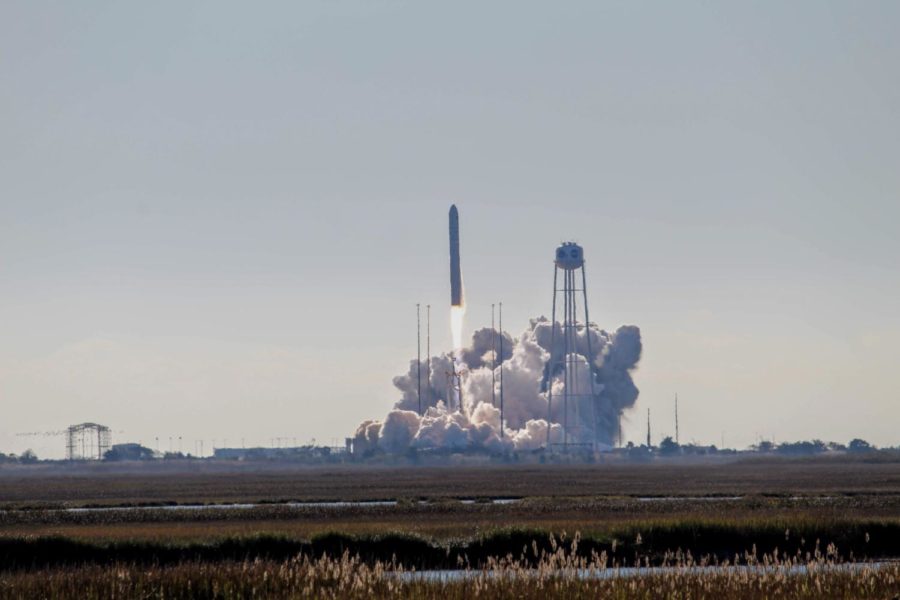NG-12 Successfully Launches to Resupply the International Space Station
Northrop Grumman launched their NG-12 mission from the Mid-Atlantic Regional Spaceport on Nov 2, with new vehicle improvements.
After completing the first set of contracted Commercial Resupply Services flights (CRS-1) to the International Space Station (ISS) on NG-11, Northrop Grumman began their second set of resupply flights under the Commercial Resupply Services-2 (CRS-2) contracts with the launch of NG-12 using their improved Antares rocket.
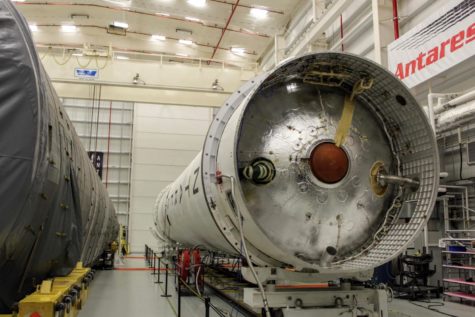
The Antares rocket consists of two stages. The first stage, built by the Ukrainian state-owned enterprise Yuzhmash, has two Russian RD-181 engines These Liquid Oxygen (LOX) and RP-1 kerosene engines are single chambered versions of the RD-180 engine that is used on the Atlas V rocket series, both being built in Russia by NPO Energomash. The second stage being a Castor 30XL solid rocket motor built by Northrop Grumman.
Over the years, Antares has gone through some variants and modifications, the variants being the 100-series, 200/230-series, and 230+ series. It originally used the modified NK-33 engines from the Russian N-1 moon rocket. After refurbishment by Aerojet Rocketdyne, they were called the AJ26. However, the Antares 200 replaced them with the RD-181s after an AJ26 caused the failure of the third CRS-1 flight in 2014, called Orb-3 after Antares original owner, Orbital Sciences.
An investigation into the Orb-3 launch failure concluded that there was an explosion in the number one engine’s LOX tubopump which then damaged the number two engine. This explosion caused a loss of thrust and the rocket fell back to the ground and was destroyed. Further Cygnus missions were launched on the Atlas V rocket from Florida until the Antares return to flight mission (OA-5) in 2016.
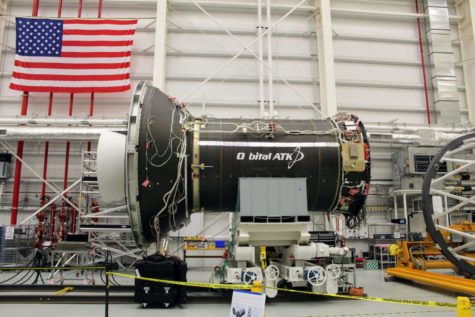
The Pressurized Cargo Module on board the Cygnus spacecraft is built by Thales Alenia Space, located in Turin, Italy. The Service Module, which consists of the two solar arrays, navigation equipment, and propulsion equipment is built by Northrop Grumman in Dulles, VA.
The NG-12 mission is the first mission using a modified Cygnus spacecraft and the first of the new Antares 230+ variant. “CRS-2 missions require more mass to orbit, both because we’re carrying more cargo…[and] Cygnus itself will be heavier in order to provide all those great services to NASA that are required for CRS-2,” said Antares vice-president at Northrop Grumman, Kurt Eberly.
In order to lift a heavier Cygnus, Northrop Grumman strengthened to the core of the first stage of Antares in order to keep the engines at 100% thrust through most of the first stage burn, including the region of maximum dynamic pressure. Additional modifications included lightening both stages and the upper portion of the rocket.

“All these vehicle enhancements, plus lowering the perigee of our target orbit slightly, allows us to increase our mass to orbit on the order of 800 kilograms or 1760 pounds,” said Eberly.
The Cygnus modifications included the increased weight, more powered middeck lockers (six out of the ten lockers are powered vs the four powered lockers out of six on the NG-11 mission), more late-load capability, and the new ability to stow cargo pallets on the outside of Cygnus for disposal.
“From the time we delivered the first vehicles to the ISS, they were primarily cargo supply vehicles and disposal vehicles. Over time we’ve added more and more capabilities in the spacecraft to be more and more science-friendly,” said vice president and general manager of Space Systems at Northrop Grumman, Frank DeMauro, who came to Northrop Grumman with its acquisition of Orbital Sciences.
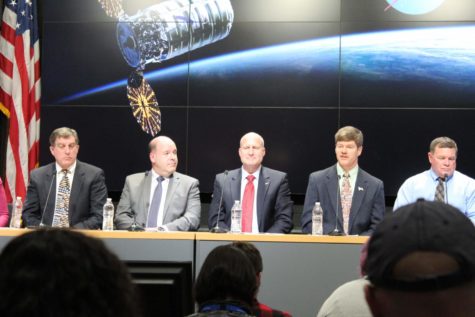
One of the “more important [upgrades] is all the powered locations where we can keep all our life sciences powered from launch to arrival at station. There’s a lot of things that happen in microgravity that are very quick and to be able to keep our specimens powered and going and monitored through that flight is really important to us,” said Pete Hasbrook, the manager of the International Space Station Program Science Office at NASA’s Johnson Space Center.
Like all of the past Cygnus spacecraft launched by then Orbital Sciences Corporation, then Orbital ATK, and now as Northrop Grumman, each is named after a deceased individual who innovated in aerospace or made a profound impact on spaceflight. So far all of the names have been astronauts other than the SS J.R. Thompson for the OA-9 flight, named for the late vice chairman of Orbital Sciences and the fifth director of NASA’s Marshall Space Flight Center in Huntsville, Alabama.
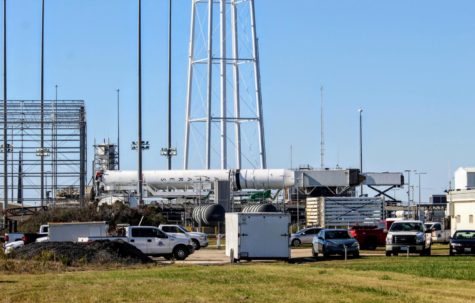
The name of the NG-12 spacecraft is the SS Alan Bean. Northrop Grumman chose Bean to honor the fiftieth anniversary of Alan Bean and Charles “Pete” Conrad landing the Apollo 12 Lunar Module Intrepid on the Moon in a region called the “Ocean of Storms” on Nov 19, 1969. After becoming the fourth person to set foot on the moon, Bean also flew to Skylab, America’s first space station on Skylab 3 in 1973. He remained an artist until his death in 2018.
On the morning of Oct 30, the assembled Antares rocket with Cygnus was rolled out of the Horizontal Integration Facility (HIF) at the Mid-Atlantic Regional Spaceport (MARS) on Wallops Island, VA. It left a facility filled to the brim with spaceflight equipment, including the first and second stages for NG-13 and the newly arrived first stage for NG-14.
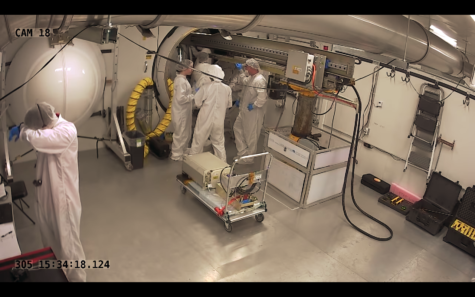
The Antares rocket for NG-12 was then horizontally rolled out on the Transport Erector (TE) to Pad-0A. The complete journey from the HIF to Pad-0A spanned the distance of around a half-mile. Once there, the rocket was raised to vertical. In that position, the pad crews carried out checks and then lowered the rocket back to horizontal.
On Nov 1, the mobile cleanroom was moved to the tip of the Antares rocket at Pad-0A. Once in position over the nose cone, the the “pop-top” was removed in the clean environment, which allowed access to the interior of the Cygnus spacecraft while protecting it from the coastal environment.
Around 20% of the cargo on board the Cygnus spacecraft is considered “late-load,” which means the cargo needs to be loaded within 24 hours of launch. Once protected, time time-sensitive cargo was installed into the Cygnus spacecraft.
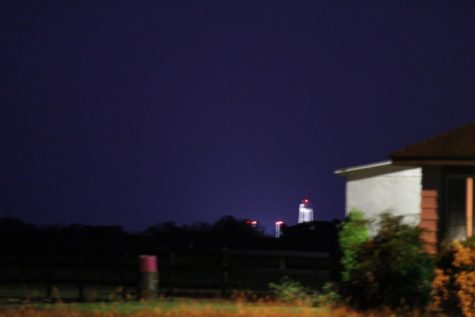
The cargo on the Cygnus spacecraft included repair parts and tools for the Alpha Magnetic Spectrometer-02 (AMS-02), which is mounted on the outside of the ISS. The AMS-02 has been searching for Dark Matter and Antimatter since it was brought to the ISS by the second to last Space Shuttle flight, STS-134 on May 19, 2011.
The instrument has been out of commission due to the failure of the primary cooling loop, with the second nearing its end of life. Three of the four pumps are stopped.
In the near future, there will be a series of spacewalks or EVAs made by the current Expedition 61 crew on the ISS to repair the AMS-02 experiment, and give it a new lease on life. The repairs will extend the life of the AMS-02 for the remainder of the life of the ISS.
Also on board NG-12 was the AstroRad Vest, the Zero-G Oven, the Made in Space Recycler, a new treadmill (it replaces the original one that failed earlier in the year), new Urine Transfer System hardware, an Airlock Thermal Cover Stiffener, and other equipment. The Cygnus carried a total cargo weighing 8,168 lbs or 3,705 kg.
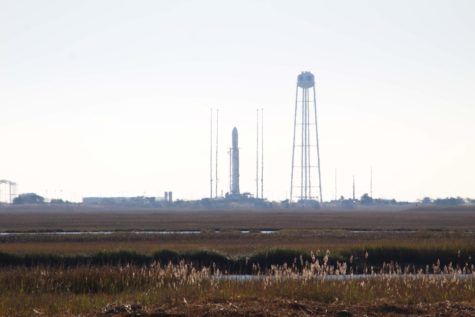
The goal of the Zero-G Oven is to bake in a zero-gravity environment. The project partnered with the hotel chain DoubleTree. “Its [the current ISS food is] nothing fresh. It’s all something that’s actually been already cooked, and all you’re really doing is reheat(ing) it. So this is a really cool opportunity to actually figure out what are we really going to do when we can’t take all the food with us,” said the Senior Payloads Manager for the Zero-G Oven, Mary Murphy.
During the first part of the NG-12 mission, Northrop Grumman will be flying two Cygnus spacecraft simultaneously, as the NG-11 Cygnus spacecraft remains in orbit since its release from the ISS on Aug 6, 2019. NG-11 has no exact date for deorbit and reentry as of now, but it is expected to occur around the end of the month of November. The determining factor that will decide when to deorbit the NG-11 Cygnus will be when the controllers at Northrop Grumman have collected enough data.
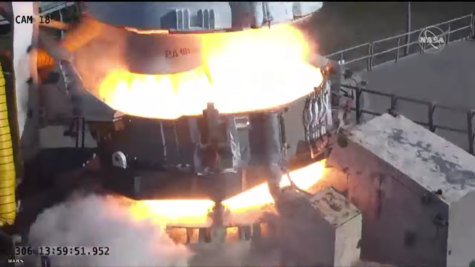
“We have done a lot of testing. This capability was implemented a few missions ago, targeting that the NG-11 would be the long duration free-flyer and part of that experiment was to show our ability to fly what’s called a control moment gyro. Cygnus actually uses no fuel to control itself under normal circumstances.” said DeMauro.
Around 8:45pm EDT on Nov 1, the Antares rocket was raised to back vertical on Pad-0A. The rocket then stayed in that position throughout the night for launch the next day.
Personnel both at the Cygnus control center in Dulles, VA and at Wallops Island arrived on console for launch at 4:30am EDT. The five-hour countdown began at 5:00am EDT.
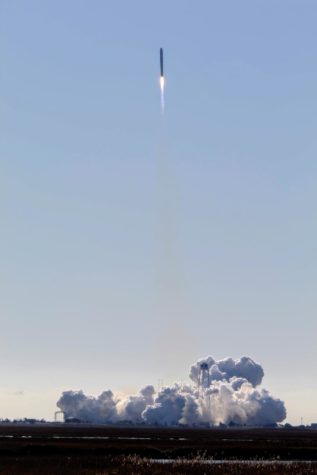
The countdown continued through the preparations for launch. 1½ hours prior to launch, fueling of the first stage began. That was followed by the chilldown of the RD-181 engines at T-5 minutes.
Without any delays, the Antares rocket lifted off from Pad-0A at the beginning of the launch window at 9:59:47am EDT, the instant the launch site rotated under the orbit of the ISS.
Around three minutes later, Main Engine Cut-Off (MECO) occurred for the first stage. Seconds later, the second stage separated from the first stage.
At three minutes and 53 seconds from launch, the fairing separated, with the interstage following soon after. The powerful Castor 30XL solid rocket motor then ignited on the second stage. It then burned out after 6 minutes and 48 seconds from launch, and Cygnus had achieved orbit.
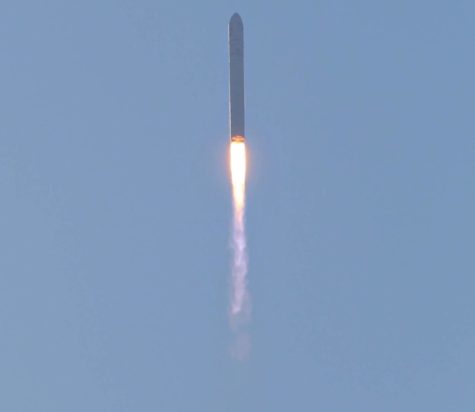
After the burnout of the second stage, Jonathan McDowell noted the orbit as 182 x 265 km and with an inclination of 51.7 degrees. The separation of the Cygnus spacecraft occurred around eight minutes after launch.
The two solar arrays on the Cygnus spacecraft were deployed by 1:30pm EDT later that day. Over the next two days, Cygnus slowly raised its orbit to 413 x 425 km (NASA Spaceflight.com) in preparation for rendezvous with the ISS.
The NG-12 mission launched to space exactly 19 years to the day the Expedition 1 crew arrived at the ISS. Launched on Nov 1, 2000 Sergei K. Krikalev, William M. (Bill) Shepherd, and Yuri Pavlovich Gidzenko began the 19 years of continuous occupation. “If you look around the world, over a quarter of the population of the world have been born since we have been flying humans in space. They know nothing else other than humans living and working in space, and that’s really cool for us,” said Hasbrook.
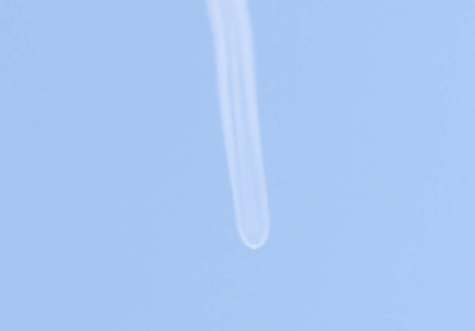
“What it really means is there’s a whole new generation here that’s going to take over for us and lead us further into space than we have ever been…they know that it’s quite possible to live and exist, and to flourish in space. The ISS still has a lot of life in it, so I am excited for the years we have left. I am very proud to have been a part of it [the ISS program] and am looking forward to the future,” said the manager of NASA’s International Space Station Program, Kirk Shireman.
At 4:10 AM EST on Nov 4, the Cygnus spacecraft was captured by the ISS. NASA Astronaut Dr. Jessica Meir controlled the CanadArm 2 with Christina Koch serving as her back-up. Over the next few hours, the Cygnus spacecraft was berthed to the Nadir port on the Unity Module (Node-1) on the ISS.
Soon after the Cygnus was berthed to the ISS, the Expedition 61 crew conducted a series of leak checks and outfitted the vestibule for hatch opening and ingress into Cygnus. The vestibule is considered the space between the hatches of the station module and the visiting spacecraft.
After the hatch was opened, the crew floated into Cygnus and first removed critical science payloads. Some of the critical science payloads included rodents, which are used in experiments that examine how microgravity effects the health of the rodents and possibly humans too.

The spent Castor 30XL second stage remained in a low orbit around the Earth. Slowly, the orbit decayed until it reentered the Earth’s atmosphere on Nov 7, after spending 4.4 days in space (according to Jonathan McDowell).
The Cygnus spacecraft is scheduled to remain docked to the ISS until January of 2020. After that, the spacecraft will enter what is called the “free flight” part of the mission. The NG-12 Cygnus will not be doing a long-duration, “free flight” mission like the NG-11 Cygnus is doing currently.
The “free flight” part of the mission will include the release of 15 educational cubesats into a higher orbit. The cubesats are part of the ELaNa 25 mission. Afterwards, the spacecraft will reenter the earth’s atmosphere, in which it will burn up with the trash stowed inside it.


